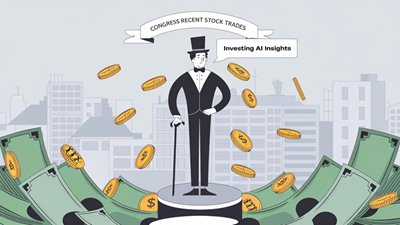MarketLens
How Have Adobe’s Recent Stock Buybacks Influenced Its Market Performance?
Adobe Inc. (NASDAQ: ADBE), a leading software company renowned for its creative and digital media solutions, has been actively engaging in stock buybacks. This report delves into the recent stock buybacks by Adobe and their impact on the company’s market performance. By examining various sources and financial metrics, we aim to provide a comprehensive analysis of how these buybacks are influencing Adobe’s stock price, investor sentiment, and overall market standing.
Adobe’s Stock Buyback Programs
Recent Buyback Announcements
Adobe has made significant strides in its stock buyback initiatives. In Q2 2024, Adobe repurchased $2.5 billion worth of its stock at an average price of $543.48 per share. This is part of a larger $25 billion buyback program announced through fiscal 2028, which aims to repurchase approximately 11% of its outstanding shares. In fiscal 2023, Adobe repurchased $4.61 billion of its stock at an average price of $400.87, yielding a return on investment of over 30.3% in less than a year.
Historical Context and Strategic Intent
Historically, Adobe has been active in stock buybacks, signaling management’s confidence in the company’s future prospects. The capital-light nature of Adobe’s business allows it to reinvest surplus cash into buybacks, acquisitions, and other growth initiatives. This strategy is particularly advantageous compared to leveraged companies that need to allocate profits towards debt repayment.
Financial Performance and Market Metrics
Earnings and Revenue Growth
Adobe’s financial performance has been robust, with a revenue increase of 10.2% year-over-year in the most recent quarter. The company reported earnings per share (EPS) of $4.48, surpassing analysts’ expectations by $0.09. These positive earnings results are indicative of the company’s strong operational performance and effective cost management.
Stock Price and Valuation Metrics
As of June 10, 2024, Adobe’s market capitalization stood at $206.07 billion, with an enterprise value of $203.34 billion. The trailing P/E ratio was 43.93, while the forward P/E ratio was 25.58. The PEG ratio (5-year expected) was 1.71, and the price-to-sales (ttm) ratio was 10.57. These metrics suggest that Adobe is trading at a premium, reflecting investor confidence in its growth prospects.
Analyst Price Targets and Investor Sentiment
Analyst price targets for Adobe range from a low of $412.84 to a high of $566.55, with an average target of $458.37. The current stock price is $679.59, indicating that the stock may have peaked according to some analysts. Despite this, the overall sentiment remains positive, with a “Moderate Buy” rating from analysts. Hedge funds and institutional investors have also increased their stakes in Adobe, owning approximately 81.79% of the company’s stock.
Impact of Buybacks on Market Performance
Stock Price Appreciation
The stock buybacks have contributed to Adobe’s stock price appreciation by reducing the number of outstanding shares, thereby increasing the value of the remaining shares. This reduction in supply, coupled with strong demand, has driven the stock price higher. The average repurchase price of $543.48 in Q2 2024 and $400.87 in fiscal 2023 highlights the strategic timing of these buybacks, capitalizing on market conditions to maximize shareholder value.
Earnings Per Share (EPS) Enhancement
Stock buybacks have a direct impact on Adobe’s EPS by reducing the number of shares outstanding. This artificial boost in EPS makes the company appear more profitable on a per-share basis, which can attract more investors and drive up the stock price. The recent EPS of $4.48, which beat analysts’ expectations, is partly attributable to the buyback program.
Investor Confidence and Market Perception
The announcement of a $25 billion buyback program through fiscal 2028 is a strong signal of management’s confidence in Adobe’s long-term prospects. This move is typically seen as a positive sign that the company’s stock is undervalued, encouraging investors to buy or hold their shares. The increased stakes by hedge funds and institutional investors further reinforce this positive outlook.
Risks and Challenges
Market Conditions and Economic Factors
While stock buybacks can positively impact market performance, they are not without risks. Market conditions and economic factors, such as interest rate changes and macroeconomic trends, can influence the effectiveness of buybacks. For instance, potential interest rate cuts by the Federal Reserve could boost business activity, but they could also lead to increased volatility in the stock market.
Competitive Landscape and Technological Advancements
Adobe operates in a highly competitive industry, with intensified competition in the AI space posing a threat to its market position. The risk of AI reducing the need for larger user-based marketing teams could lead to fewer software licenses and higher revenue per subscriber but fewer overall subscribers. This competitive pressure could offset some of the positive impacts of the buybacks.
Insider Sales and Market Sentiment
Despite the positive signals from buybacks, insider sales can sometimes raise concerns among investors. In the last ninety days, insiders sold 28,270 shares of Adobe’s stock valued at $15,165,916. While this may not necessarily indicate a lack of confidence, it is a factor that investors consider when evaluating the overall market sentiment.
Conclusion
In conclusion, Adobe’s recent stock buybacks have had a significant positive impact on its market performance. The reduction in outstanding shares has driven up the stock price and enhanced EPS, making the company more attractive to investors. The $25 billion buyback program through fiscal 2028 signals strong management confidence in Adobe’s future prospects, further bolstered by increased stakes from hedge funds and institutional investors.
However, it is essential to consider the broader market conditions, competitive landscape, and insider sales when evaluating the long-term impact of these buybacks. While the current outlook remains positive, investors should remain vigilant and consider diversifying their portfolios to mitigate potential risks.
Overall, Adobe’s strategic buybacks have positioned the company favorably in the market, reflecting its robust financial health and growth potential. As the company continues to navigate the evolving technological landscape, its buyback initiatives will likely play a crucial role in shaping its market performance and investor sentiment.
Related Articles
Category
You may also like
No related articles available
Breaking News
View All →No topics available at the moment




